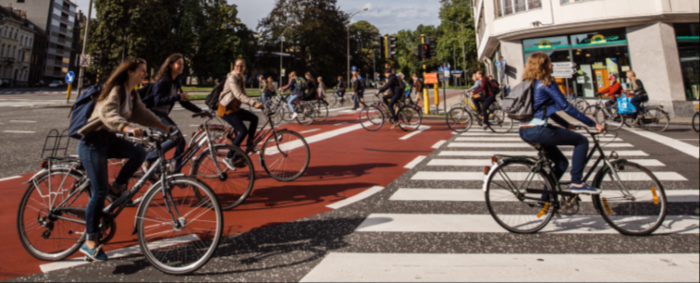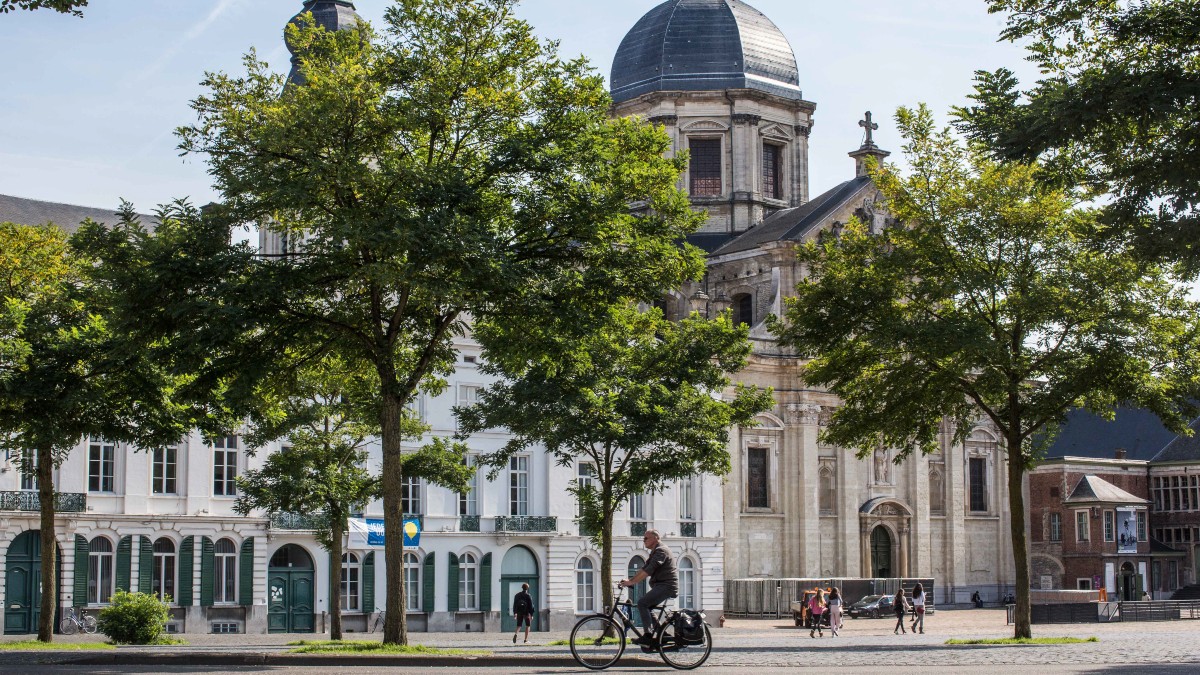Ghent, the host city of Velo-city 2024 and the newest member of ECF’s Cities & Regions for Cyclists (CRC) Network, has a long history of cycling and an exciting future, with demonstrated commitment to further cycling development and sustainable mobility. Ghent’s mobility policy has prioritised walking and cycling since the 1990s.
A bicycle plan implemented as early as 1993, and the creation of a large pedestrian area in 1997, have created a car-free historic city centre that is the largest in Belgium (70 hectares). Early commitment to sustainable mobility has paved the way for the city’s staggering progress, especially in the last decade.

Photo courtesy of City of Ghent
The making of a Cycling City
By gradually introducing powerful mobility measures in the last ten years, Ghent is in a position to overshoot its targets. The city has seen its cycling modal share increase from 22% in 2012, to 30% in 2015 and 35% in 2018, a goal that was set for 2030! Below are some of the key highlights in its cycling development:
2015: Approval of Mobility Plan 2030 and reduction of speed limit within the entire inner-city ring to 30 km/h (a measure to be further implemented in all neighbourhoods)
2015 – 2023: Using a neighbourhood-oriented approach towards bicycle rack installation, the city administration is identifying bicycle parking needs with input of inhabitants in its 25 neighbourhoods and objective on-street counts. Bicycle racks are placed at a maximum distance of 100 m from each front door in densely populated areas in order to maximize the efficiency of public space use. Since 2015, approximately 12,000 public bicycle parking spaces (sheltered bike parking not included) have been created this way, with more than 8,200 using a neighbourhood-oriented approach, repurposing a total of around 900 car parking spaces. All neighbourhoods will be screened by mid-2023.
2016: The aforementioned bike-parking approach was part of an integral parking plan for the city in 2016. The plan further included increasing the price of on-street parking (the closer to the city center, the more expensive) with exceptions for residents, and a limit to the parking time (no more than 3 hours within the “red zone”) to encourage visitors to use the underground parking, park and rides or preferably a more sustainable mode of transport to come to Ghent.
2017: Traffic counts showed that 40% of the motorised traffic within the city center was through-traffic. With liveability and space for active mobility as key objectives, Ghent put in place a very ambitious circulation plan, realised over one weekend with minimal budget. The city centre was divided into six sections surrounding the restricted traffic area (an area which was simultaneously expanded by 128%), making driving between zones impossible without using the inner ring road. The traffic circulation was changed on approximately 80 streets, 2,500 road signs were removed, or newly placed, and most motorised traffic was permanently removed by the closing of 14 locations.
2017 was also the launch of the Cycling Embassy of Ghent – a new cycling agency, founded by the city and the high schools of Ghent. The agency stimulates and facilitates the use of the bicycle as a sustainable mode of transport through a recognisable, innovative and a highly accessible line of services. One of the main services is bike rental; with a fleet of 8,000 bicycles of 24 different types, the Cycling Embassy of Ghent rents bicycles to students, citizens and tourists alike. Bike parking and bike repair are also among the main services of the agency. New innovative projects were completed in the last years, including a successful network of bike pumps, vending machines, communication campaigns as well as new innovative approaches for secure bike parking.
2018: Approval of a city regional cycling network for the entire city, including rural parts of Ghent and the harbour. The network is aligned on the existing network of cycling highways in Flanders and the local networks of the neighbouring cities.This forms the basis for initiating new and upgrading existing cycling infrastructure.
2021: Introduction of a new cycling signalisation system aligned on the city regional cycling network. This signalisation system is designed for easy use by both people that are familiar with Ghent and people that are first-time visitors.
2023 (planned): Implementation of the first two of seven neighbourhood mobility plans, that will ban most of the through-traffic in the neigbourhood by changing the traffic circulation.Similar to the circulation plan, these neighbourhoods mobility plans will create extra space for cyclists, pedestrians and public transport.
Infographic by City of Ghent
Ghent is Velo-city 2024
With numerous cycling bridges and underpasses, almost 400 km of cycling infrastructure, over 20 bicycle streets, over 20 school streets, a bold bicycle parking policy aiming to offer bicycle parking at a maximum of 100 m of every resident’s home, as well as the founding of the Cycling Embassy of Ghent, the city is well-versed in efficient and successful cycling policy, making it a perfect location for Velo-city 2024.
A lot is still to be learnt and improved, as Ghent is facing much of the same challenges as other cities around the world; a growing and ageing population, shifting economic conditions, increased motorised traffic, and a lack of space. Ghent is ready to showcase its work, share and discuss with the global cycling community, and most importantly to make its cyclists proud.
Ghent joins a network of cities and regions committed to promoting cycling as a mode of transport and leisure, collectively representing almost 50 million citizens across Europe and beyond. For more information on ECF’s CRC network and how to join, visit our Cities & Regions for Cyclists page.












